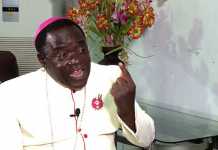

Who was Festus Okotie-Eboh?
Chief Festus Okotie-Eboh was a Nigerian politician and Minister of Finance during the administration of Sir Abubakar Tafawa Balewa was born in 1919. He was a National Treasurer of the Nigerian First Republic party, NCNC, he was also a leader of the Federal Parliamentary Party of NCNC, replacing K.O. Mbadiwe.
What was his early career like?
After his secondary education, he worked for a year as a junior assessment clerk in the Local District Office and thereafter went to work at his alma mater as a teacher. In 1937, he was employed by Bata Shoe Company as an accounting clerk. He left Bata Shoe to establish a timber and rubber business. He was involved in a rubber exporting business trading under the company name of Afro-Nigerian Export and Import Company. The firm exported ribbed smoked sheet rubber to Europe and North America.[4] In 1958, he opened a rubber-creping factory and later in 1963, he started Omimi Rubber and Canvas Shoe factory. He also started a few ventures with two foreign partners: Dizengoff and Coutinho Caro, the partners promoted Mid-West Cement Co, a cement clinker plant in Koko and Unameji Cabinet Works.
Marriage
Okotie Eboh got married in 1942 and together with his wife, started a string of schools in Sapele. The first school was Sapele Boys Academy, followed with Zik’s College of Commerce. In 1953, he started Sapele Academy Secondary School.In the 1940s and 1950s, Okotie Eboh was a board member of Warri Ports Advisory Committee, Sapele Township Advisory Board and Sapele Town Planning Authority.
How he came into politics
In 1951, after some influence from Azikiwe, he contested for a seat and was elected to the Western Region House of Assembly. In 1954, he was elected treasurer of the N.C.N.C. and was successful as the party’s candidate to represent Warri division in the House of Representatives. He was nominated as the Federal Minister of Labour and Welfare in January, 1955, and two years later, he was made Finance Minister.
What stood him out
Okotie-Eboh’s renowned flamboyance also fuelled allegations of graft against him and his co-travellers in the country’s nascent Parliamentary democracy. An affluent chief from the Itsekiri and Urhobo tribes of the Niger Delta who took pride in showing the rich traditions of his roots, Okotie-Eboh spared nothing to show his colleagues the rare breed that he was in what incomparable elder statesman, Alhaji Maitama Sule described as “his usual flamboyant way – the cap and feather, his long cloth that flowed behind him and attached to a boy some distance away; he was loved by all irrespective of party affiliations. He was hailed by all.
His Nickname
Omimi-Ejoh, Ejoh bilele, translated as ‘the man with long feature and flowing wrappers’. According to some Nigerian writers Ekotie-Eboh “was as rich if not richer than Dantata who owned 40% of the groundnut pyramids in Kanu and was wealthier than Ojukwu father and the Orizus.”
His feat
The introduction of the Pay As You Earn (PAYE) system of taxation during his tenure was a novel idea. It jerked up the revenue base of the government.Okotie-Eboh insisted that Nigeria should issue her own currency and have her own Central Bank instead of depending on the then West African Currency Board, which was responsible for issuing currencies for the colonies. This was how the Central Bank of Nigeria(CBN) was established in 1958. Chief Okotie-Eboh, could therefore, be rightly described as the founding father of the CBN. He was the the man who first printed currency in the country
Death
Okotie-Eboh was assassinated along with Prime Minister Tafawa Balewa in the military coup of January 15, 1966, which terminated the Nigerian First Republic, and thus civilian rule.




